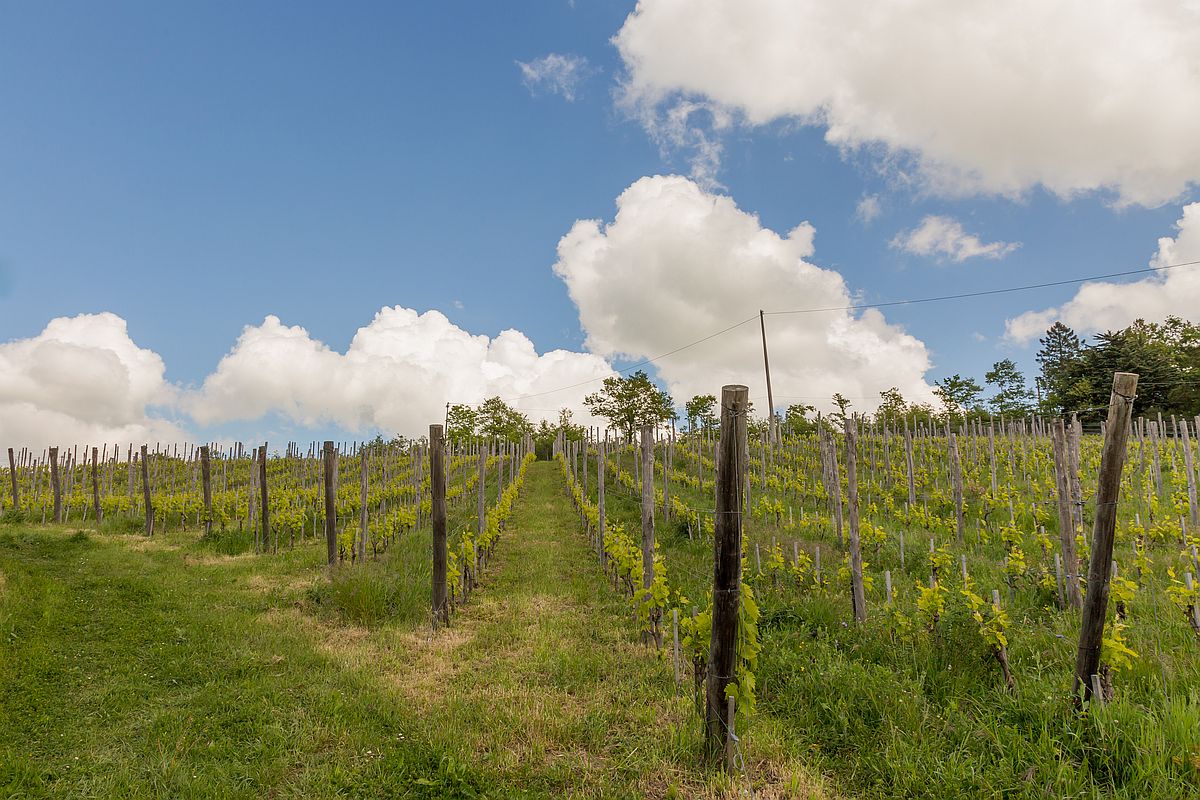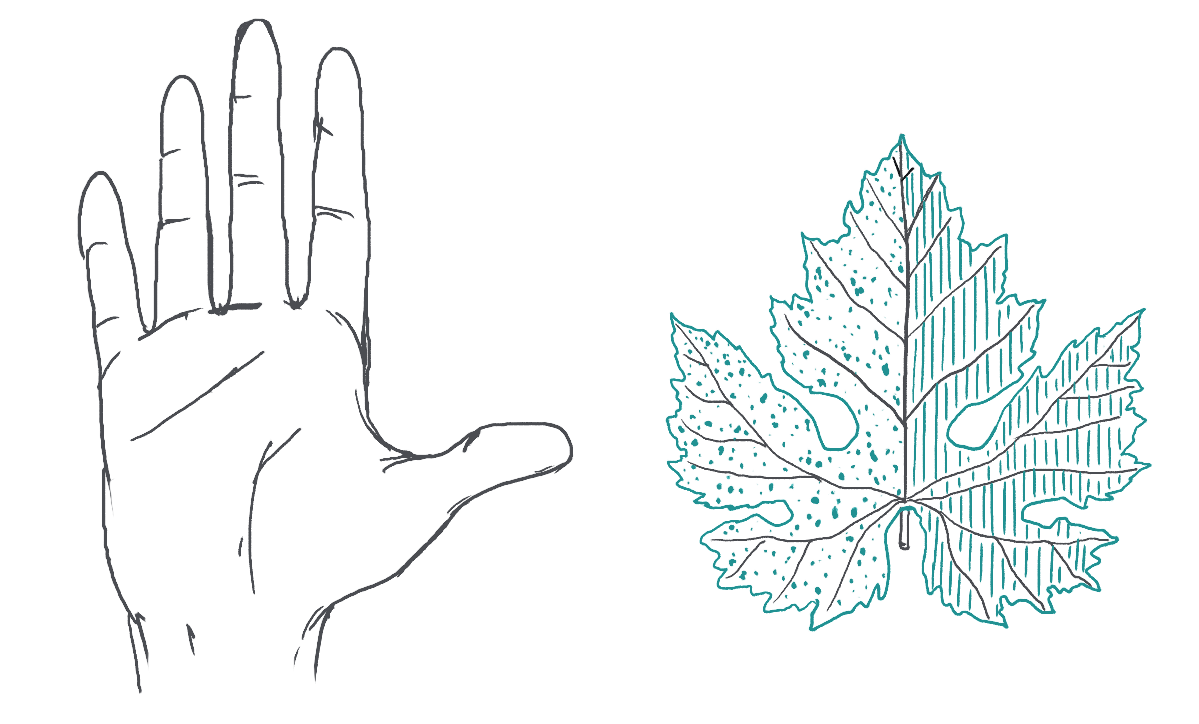
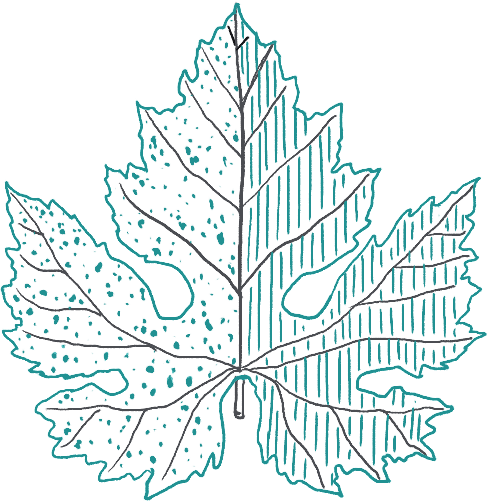
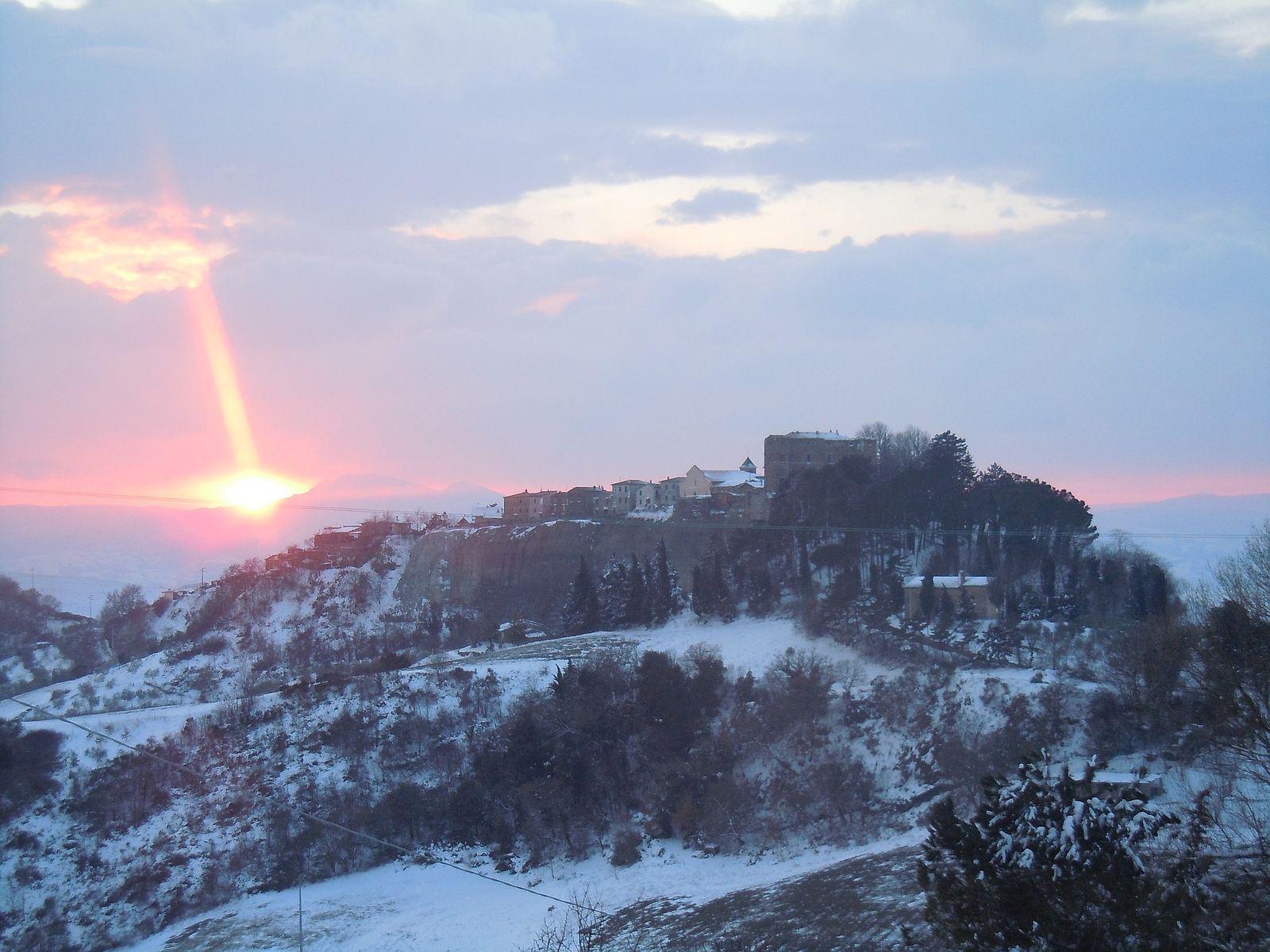


“On my land,
the essence of what I am
will help me live.”
PIER VITTORIO TONDELLI — VIAGGIO
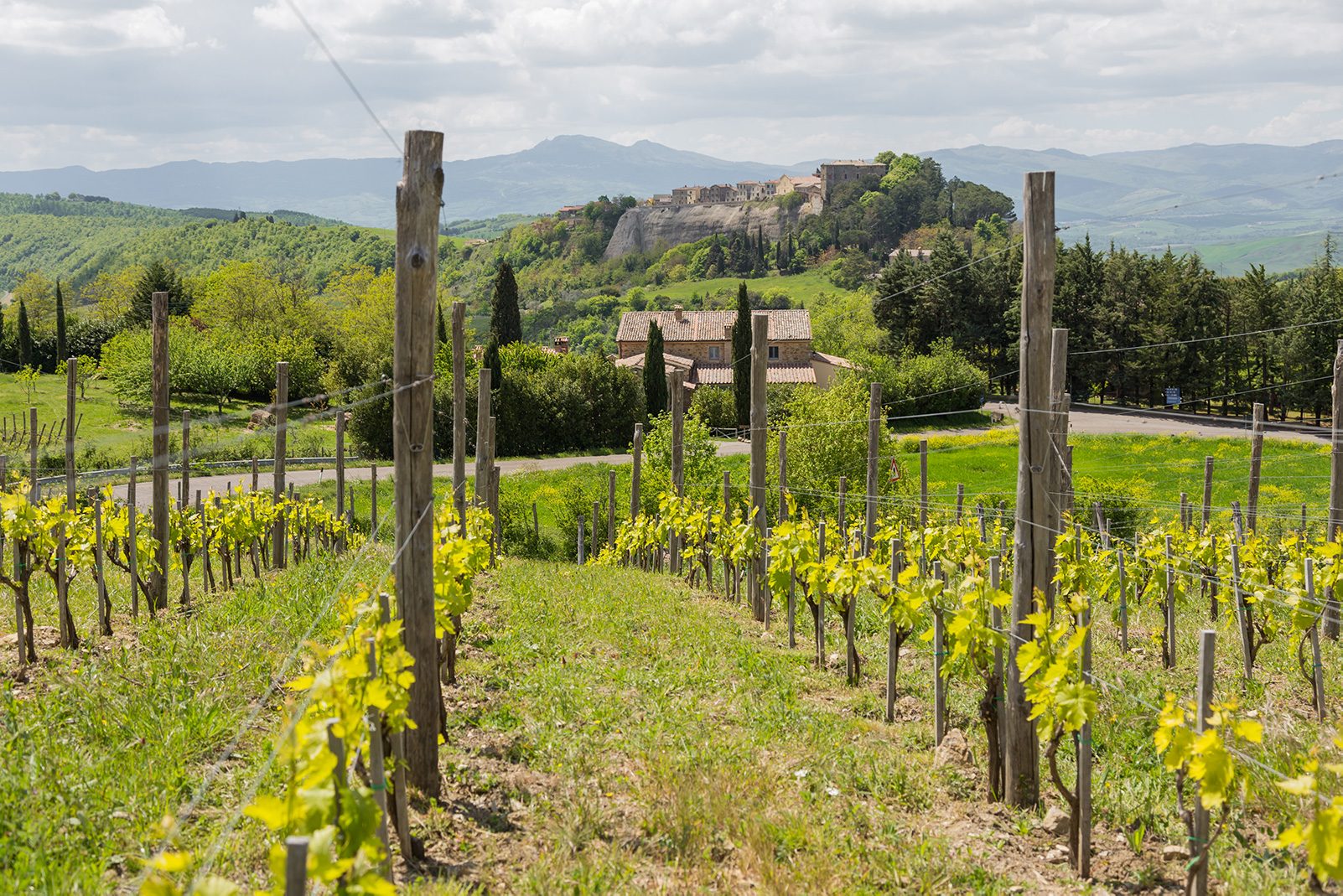

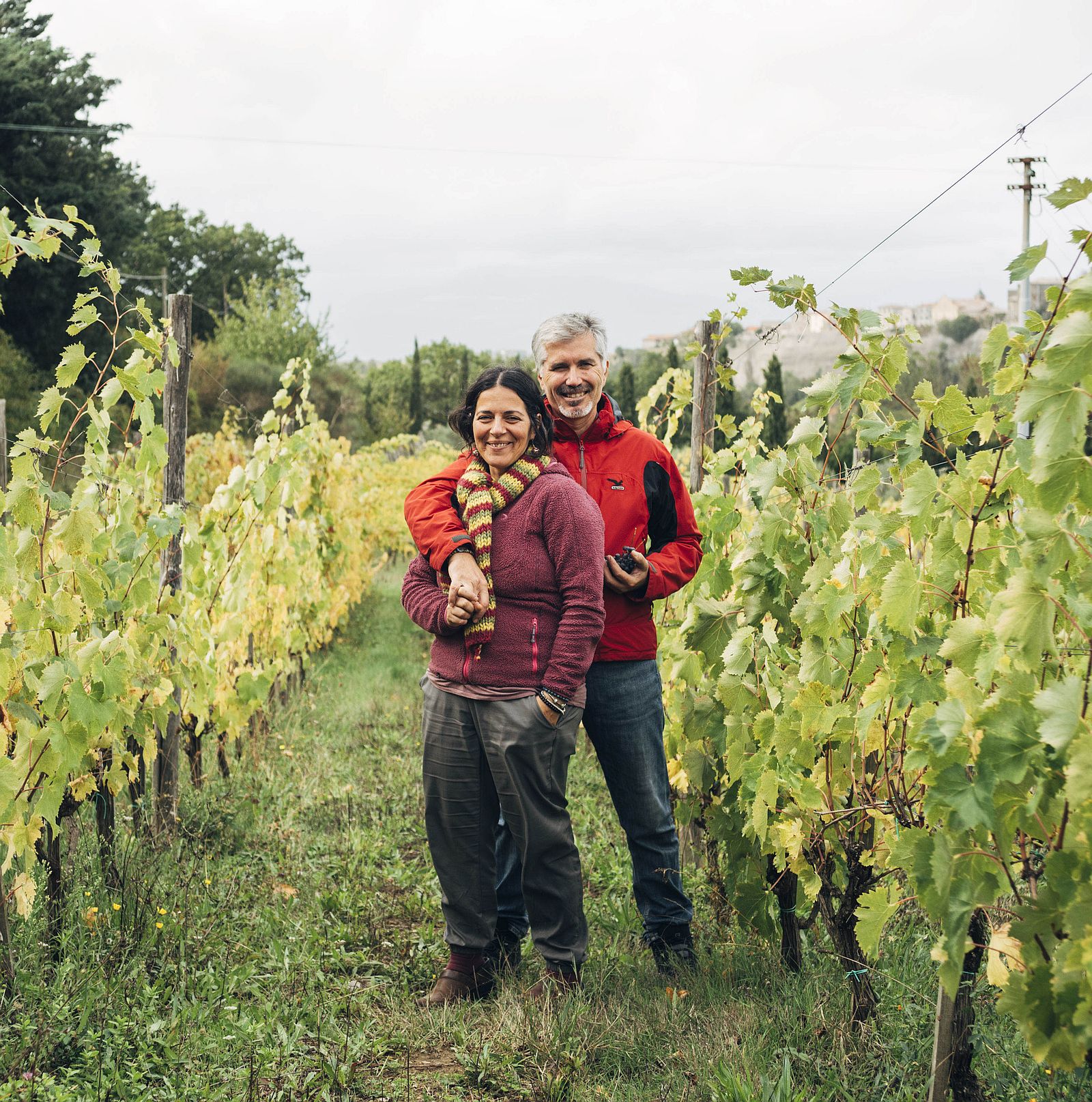
Location
Three lands.
We’re located where the last strip of northern Lazio is wedged in between Tuscany and Umbria, and the vines planted between 2009 and 2018 are grown exclusively in the area Trevinano (Viterbo) (alt. 619 m a.s.l.): the high hillside area is composed of primarily clayey-sandy sedimentary units from the Lower Pliocene period; in our area, these deposits are directly layered on the Santa Fiora formation. This formation, dating to the Lower Cretaceous period, is composed of sedimentary rocks of varying grain size and composition, such as argillite, quartz grains and limestone.
The area has a temperate climate, with a hill thermotype, with average annual rainfall of around 1000 mm, dry in the summer months of July and August and sporadically in June; cold lasting from October through to May, with increasingly hot, dry summers.
During the ripening period, months of September and October are characterised by significant shifts in temperature: temperature differences between night and day, when supported by the proper agronomic practices, generally boost the quality of the grapes, increasing sugar content, improving the phenolic composition of the grapes and enhancing aroma.

“Being natural
is such a difficult pose
to keep up.”
Nature
Biodiversity is the rich variety of life on earth: our vineyard is the result of a careful massal selection conducted by taking the genetic material from an old vineyard planted in Orto in the 1970s (which we have become the guardians of over the years), with the conviction that the only way to interact with a land is to start out from our origins. In an ecosystem, physical and inorganic elements coexist with living organisms, and it is our task to generate biodiversity with the agronomic choices we make.
The land – measuring 8.5 hectares, with the vineyard occupying around 4 hectares – borders on one of the largest green areas of central Italy: the Monte Rufeno Nature Reserve, composed of some 3000 hectares of natural resources, huge stretches of woodland, sources, waterways and a rich variety of rare plants and wildlife. The presence of this ecosystem – unaltered by human activity – also preserves the health of the surrounding areas. The quality of the air and the light and the complexity and beauty of the place have a decisive role to play in the quality of agricultural produce: organic material is sensitive to the surrounding environment, and beauty can indicate the path towards transformation.
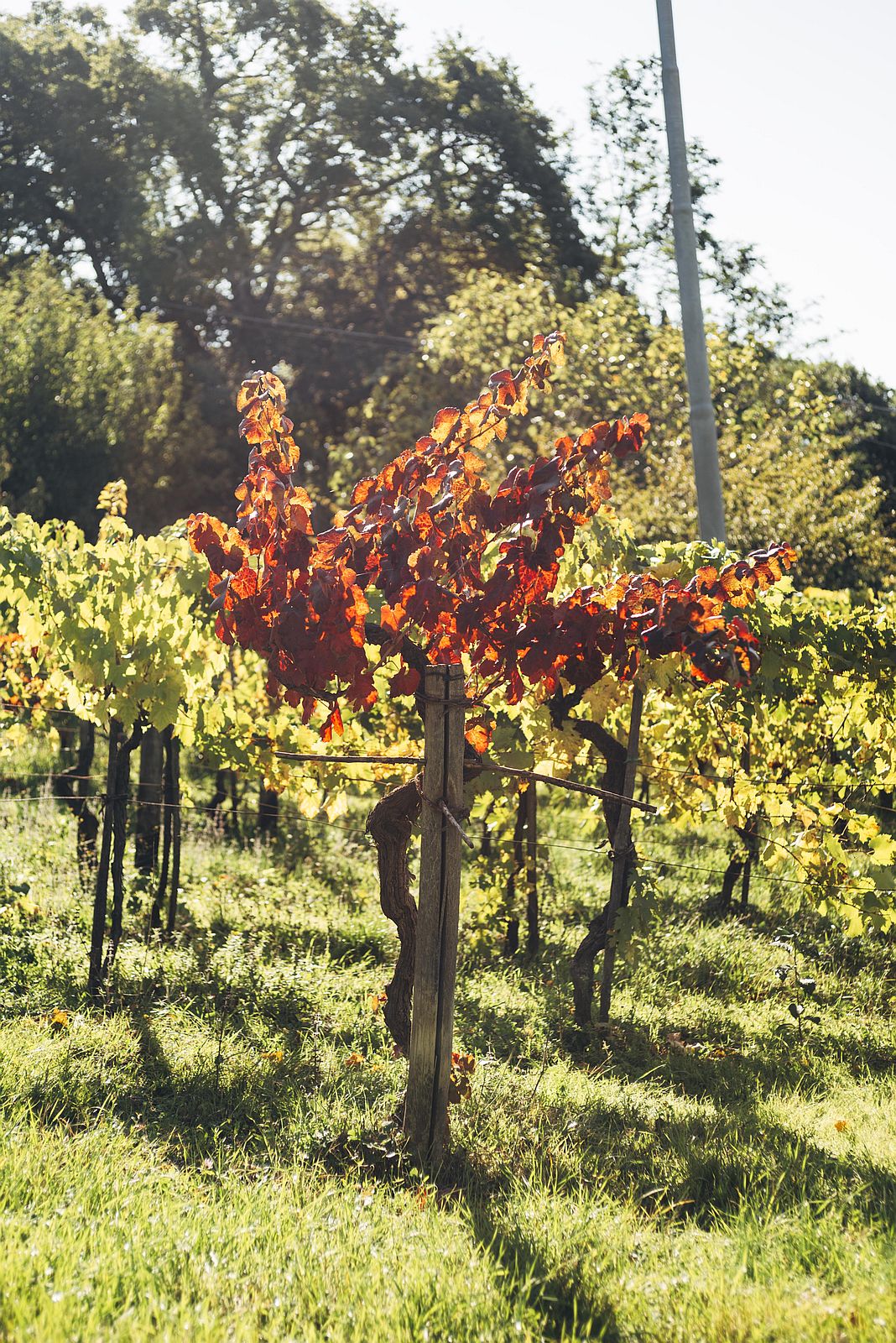
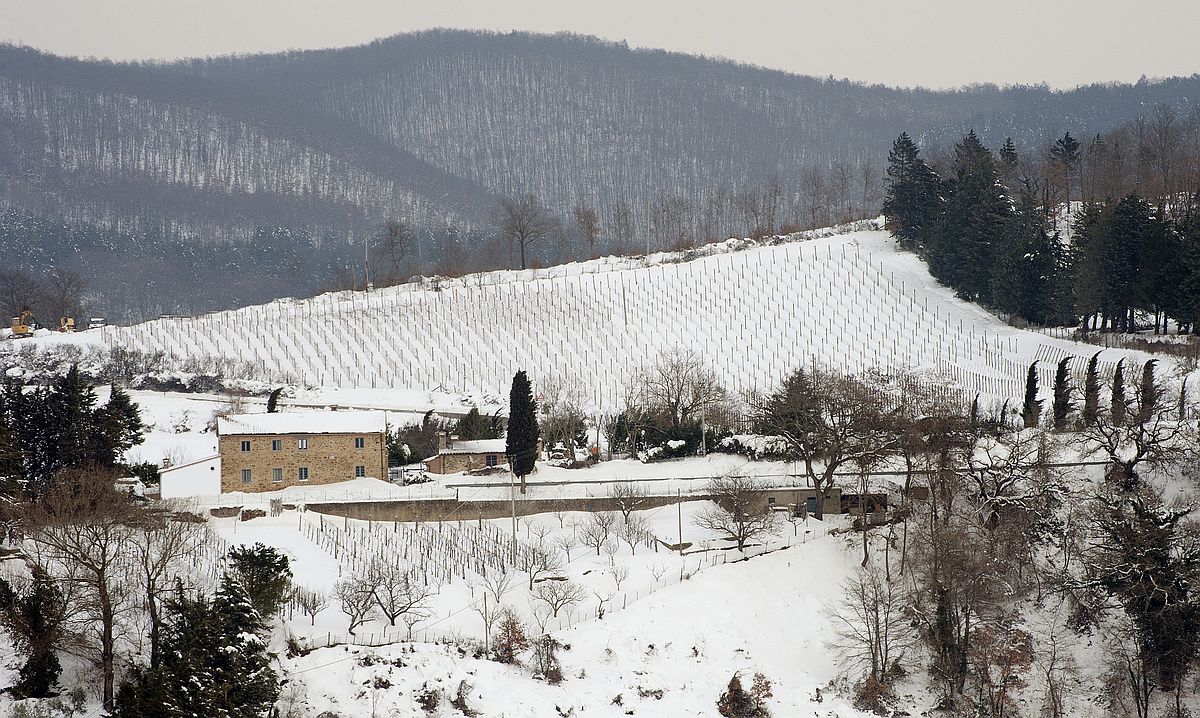
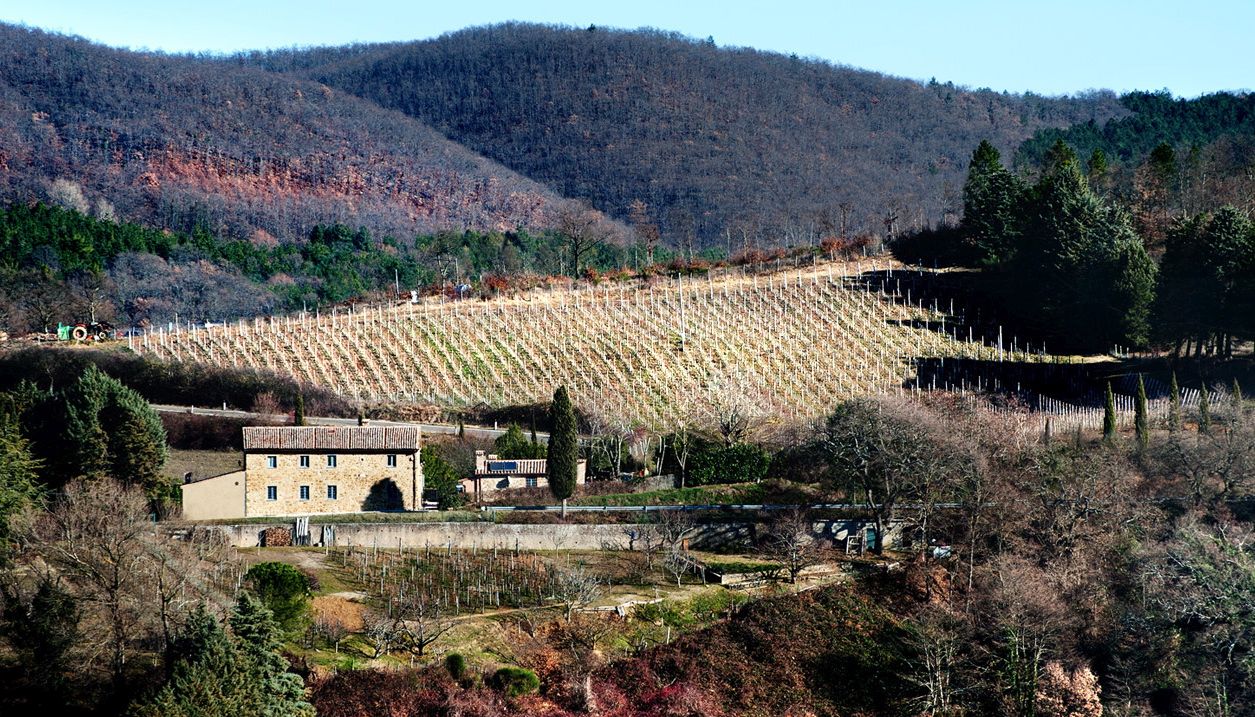
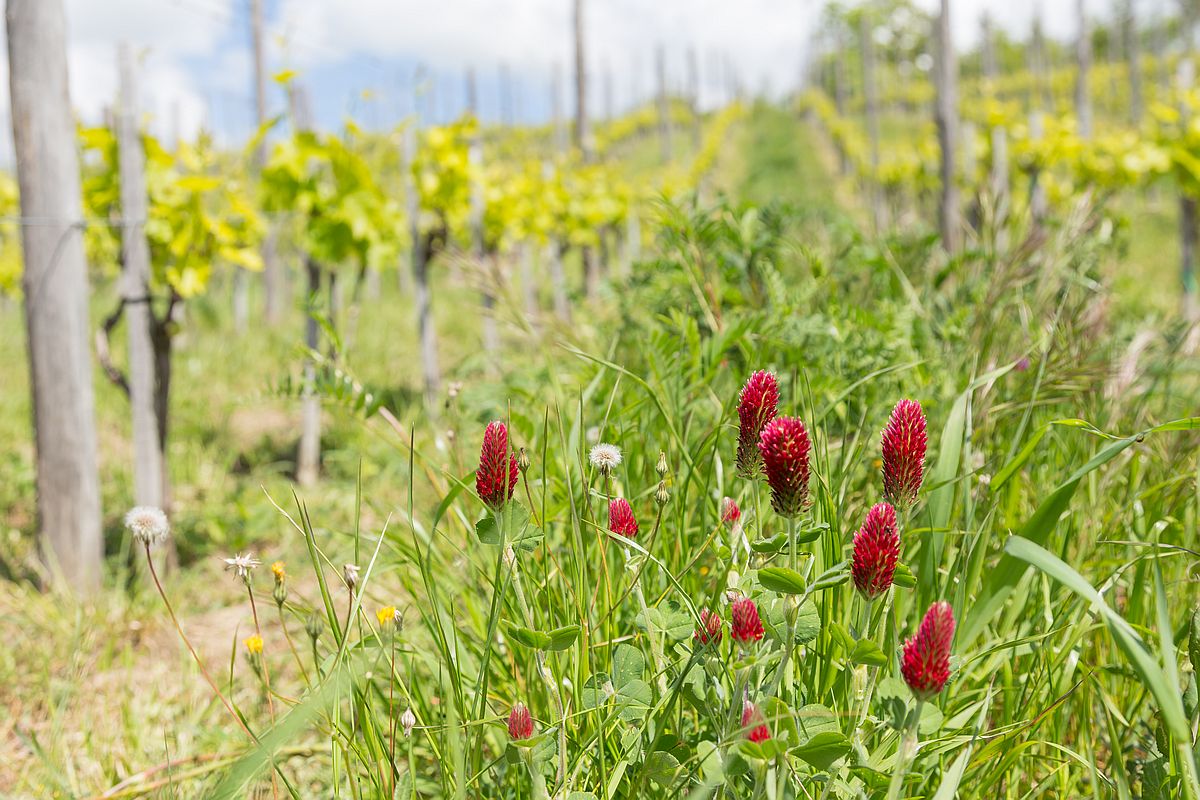







“Being natural
is such a difficult pose
to keep up .”
Nature
Biodiversity is the rich variety of life on earth: our vineyard is the result of a careful massal selection conducted by taking the genetic material from an old vineyard planted in Orto in the 1970s (which we have become the guardians of over the years), with the conviction that the only way to interact with a land is to start out from our origins. In an ecosystem, physical and inorganic elements coexist with living organisms, and it is our task to generate biodiversity with the agronomic choices we make.
The land – measuring 8.5 hectares, with the vineyard occupying around 4 hectares – borders on one of the largest green areas of central Italy: the Monte Rufeno Nature Reserve, composed of some 3000 hectares of natural resources, huge stretches of woodland, sources, waterways and a rich variety of rare plants and wildlife. The presence of this ecosystem – unaltered by human activity – also preserves the health of the surrounding areas. The quality of the air and the light and the complexity and beauty of the place have a decisive role to play in the quality of agricultural produce: organic material is sensitive to the surrounding environment, and beauty can indicate the path towards transformation.
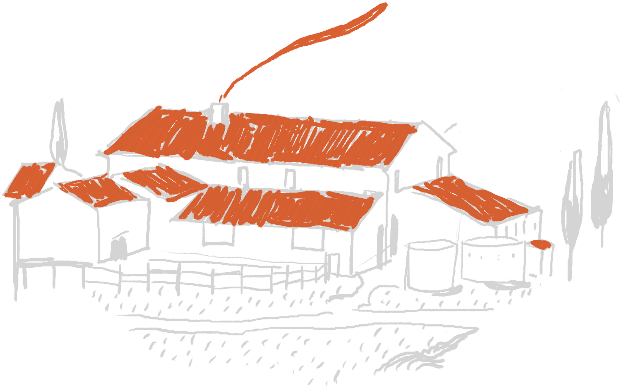



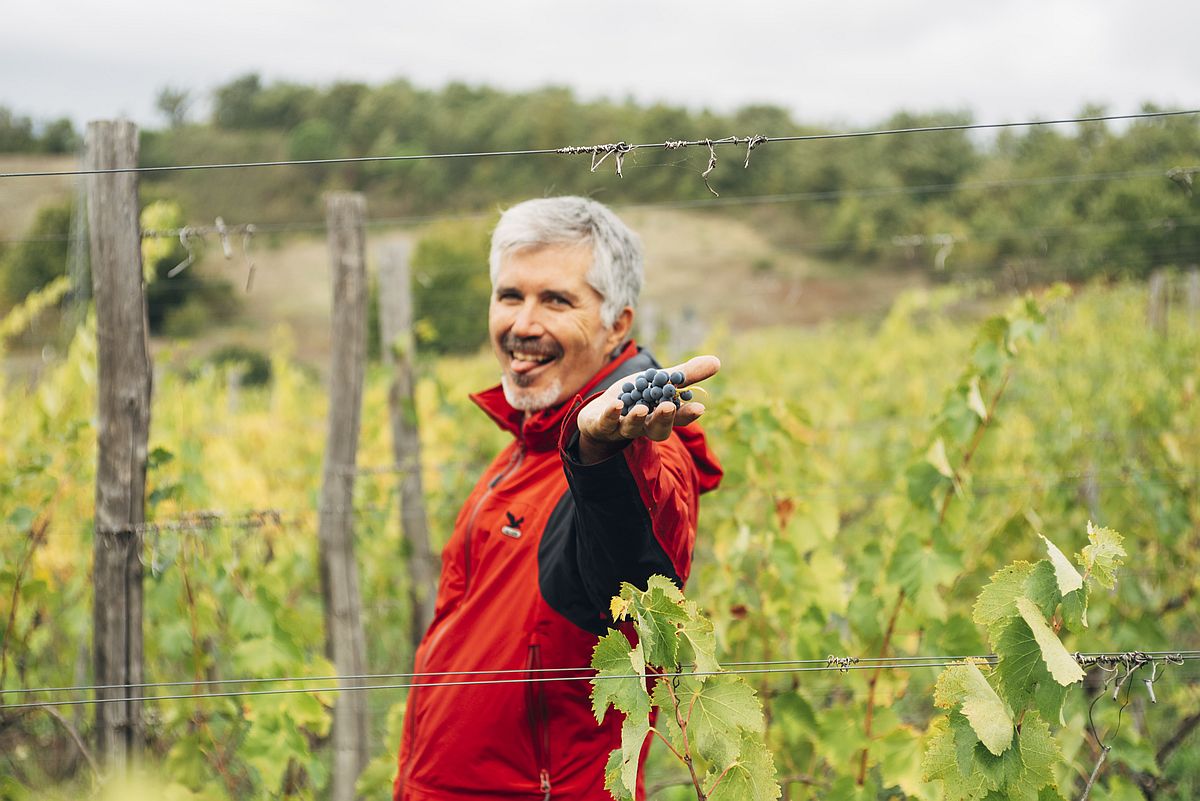
“It is impossible to live off the land without developing both a subtle understanding of, and a strong emotional bond with, that land and all it holds.”
J. KRAKAUER — INTO THE WILD
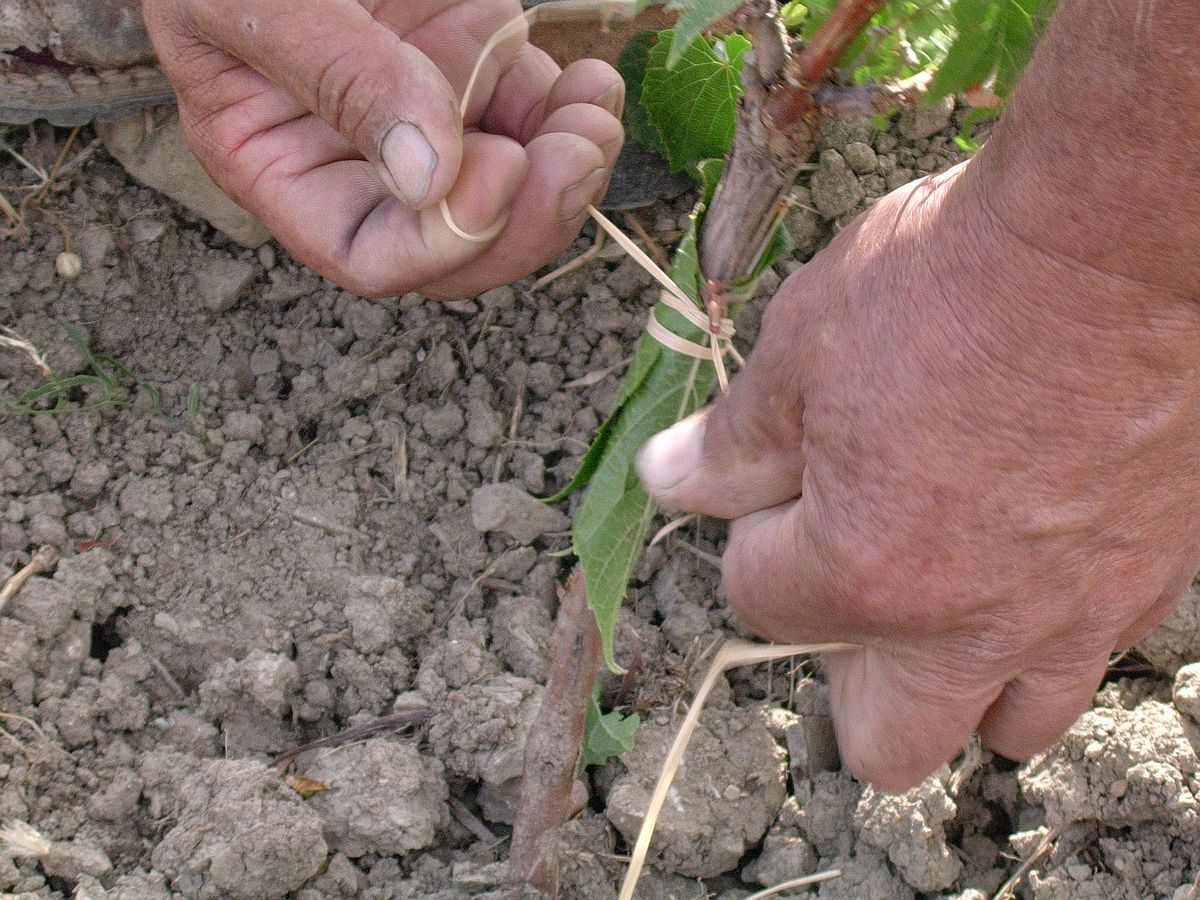



“It is impossible to live off the land without developing both a subtle understanding of,
and a strong emotional bond with, that land and all it holds.”
J. KRAKAUER — INTO THE WILD

Balance
Density without weight.
A wine must reveal the quality of a place, and must reflect its vintage: grapes harvested when fully ripe, rigorously selected to remove those whose health and ripeness leave something to be desired, low yields per hectare, quality genetic material and fermentation with indigenous yeasts. The grapes become a means to express the interaction between soil, microclimate and grower.
Since 2007, we have been practising biodynamic agriculture, and our organic farming methods are ICEA certified: our vines are grown without the use of chemicals, in a soil nourished with green manure and sprayed with biodynamic preparations. Weed control and most of the processes in the vineyard are carried out by hand. The grapes are harvested by hand into small 20 kg crates, between the start of September for the earlier varieties and the end of October for the later varieties. The wine is fermented without the use of additives and bottled without filtering, with the addition of sulphur dioxide if required. It is aged from a minimum of 18 months for white wines and 3 – 4 years for the reds (between the wine cellar and the bottle). During vinification and aging in the wine cellar, we use neutral recipients with low porosity that can guarantee moderate contact with oxygen, in an attempt to emphasise the relationship between the vine and the land and to highlight the authentic nature of our wine, with no mediation between the grape and the bouquet formed. Although the wines share a number of fresh, clean, authentic characteristics, they differ from one harvest to the next; no two vintages are alike, and – just like people – each one has a different story to tell.
Biodynamic agriculture allows us to preserve the earth, reducing intervention to a minimum with the aim of harvesting healthy grapes in perfect conditions for winemaking. We take care of the plants one by one, trying to allow them to develop the right defences to tackle adversity, and therefore treating each possible disease as the sign of a malaise that must be allowed to express itself through to its natural, logical departure, by integrating issues into the environment where they emerge.
Observation is the key to keeping the vine healthy, guiding us in the difficult task of understanding its strengths and weaknesses in order to make the right decisions. Intervention is reduced to a minimum: dynamic preparations are used, and the vines are treated, only when necessary, with homeopathic quantities of copper and sulphur. The forces of the spirit transform the world.
